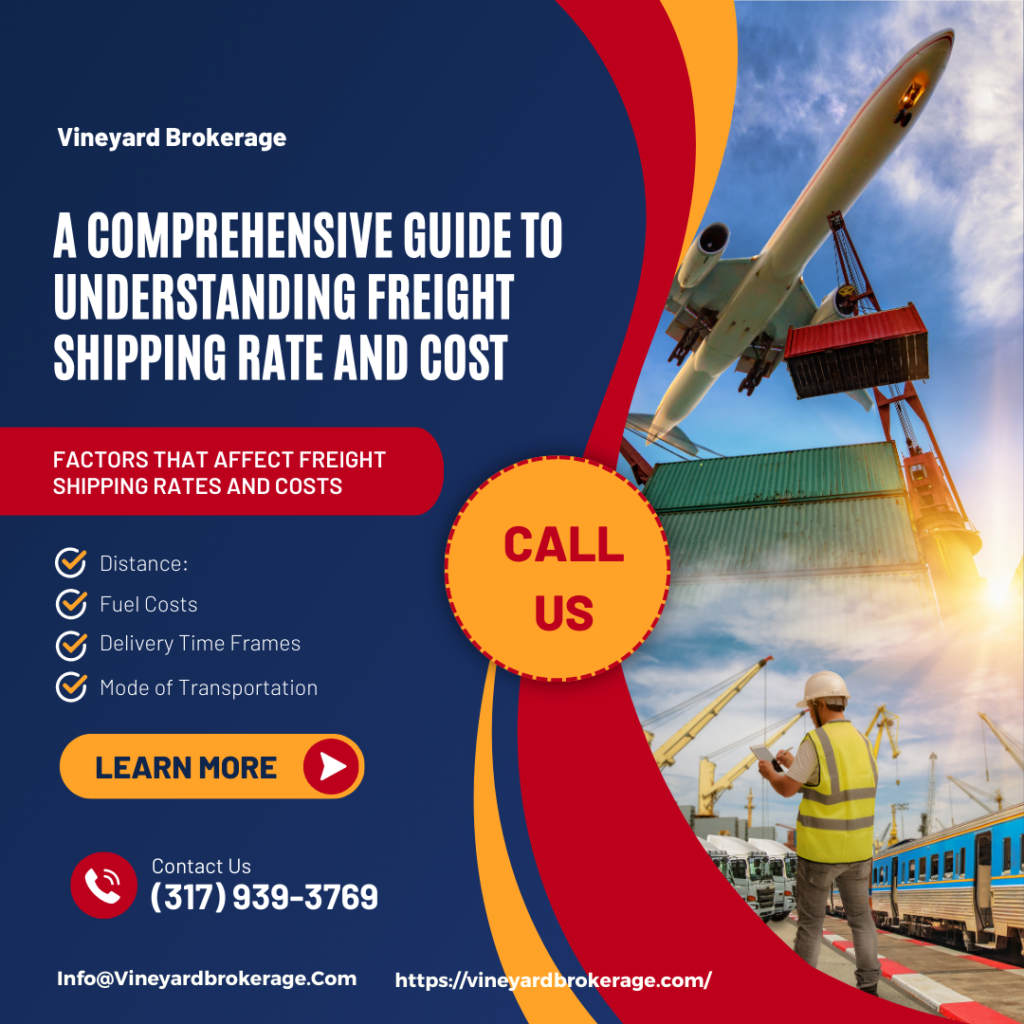A Comprehensive Guide to Understanding Freight Shipping Rate and Cost

Shipping goods from one place to another has been a vital aspect of businesses for centuries. From the silk road to modern day transportation, getting goods from point A to point B is an essential part of getting a product in the hands of the customer. However, when it comes to freight shipping, costs can add up quickly, and it can be challenging to understand the intricate details of how shipping rates and costs are calculated. In this comprehensive guide, we’ll provide an in-depth look at the ins and outs of freight shipping rate and cost that will help you navigate the complex world of the shipping industry with ease.
The Basics of Freight Shipping
The first step in understanding the cost of freight shipping is to understand the basics. Freight shipping involves the transportation of goods in large quantities. The cost of transporting those goods is determined by a variety of factors, such as distance, weight, and the mode of transportation. Typically, larger shipments result in lower shipping rates per unit, while smaller shipments can be more expensive.
Factors That Affect Freight Shipping Rates and Costs
There are several factors that can affect the cost of freight shipping, and understanding them is the key to finding the best rate. These factors include:
The Type of Goods Being Shipped: Some products are more challenging to handle and may require specialized equipment or more care to transport.
Distance: The distance from point A to point B is one of the most critical aspects of determining shipping costs.
Mode of Transportation: The mode of transportation used to ship goods can determine the rate.
Fuel Costs: The cost of fuel is a significant factor in determining shipping fees.
Delivery Time Frames: The length of time to deliver a product can also affect shipping costs.
Access to Loading and Unloading Docks: The transit time and location may impact access to loading and unloading docks.
Distance: The distance from point A to point B is one of the most critical aspects of determining shipping costs.
Mode of Transportation: The mode of transportation used to ship goods can determine the rate.
Fuel Costs: The cost of fuel is a significant factor in determining shipping fees.
Delivery Time Frames: The length of time to deliver a product can also affect shipping costs.
Access to Loading and Unloading Docks: The transit time and location may impact access to loading and unloading docks.
Different Types of Freight Shipping Costs
There are several types of freight shipping costs that companies need to be aware of when determining the best way to ship their products. These include:
Base Rates: Base rates are the transportation charges for goods and calculated based on weight and distance.
Accessorial Charges: Accessorial charges include extra fees for services such as inside delivery, liftgate delivery, and residential delivery. Companies may also be charged extra for fuel surcharges, taxes, or other costs.
Accessorial Charges: Accessorial charges include extra fees for services such as inside delivery, liftgate delivery, and residential delivery. Companies may also be charged extra for fuel surcharges, taxes, or other costs.
Common Mistakes to Avoid When Calculating Freight Shipping Costs
Some of the most common mistakes when calculating freight shipping costs include not factoring in accessorial charges, using incorrect dimensions for a shipment, or not using the right classification. These mistakes can significantly impact shipping costs and lead to unexpected charges or delays in receiving shipments.
Effective Strategies for Reducing Costs
To get the best rates for shipping, businesses can use several cost-saving strategies, such as:
- Consolidate Shipments to Take Advantage of Discounts: Companies can organize their shipments, bundle them together, and take advantage of volume discounts.
- Use Third-Party Logistics Providers: Hiring third-party logistics providers to manage shipping needs can help companies consolidate shipments, negotiate lower rates, and decrease shipping costs.
- Optimize Shipping Routes: Mapping out efficient, cost-effective shipping routes that optimize freight movement can result in significant cost savings.
- Ensure Proper Packaging: Properly packing items can reduce the risk of damage and lower freight shipping costs. Choosing the right packaging materials and methods is crucial, as poorly packaged items are more susceptible to damage and may require additional shipping fees.
Negotiating Shipping Rates
Freight shipping rates can often be negotiated, especially for larger shipments. Businesses can negotiate with carriers to get the best rates for their shipping needs. Knowing the key factors that carriers consider when determining rates and understanding the external factors impacting the industry can give businesses leverage when negotiating rates.
Technology in Freight Shipping
The role of technology in the freight shipping industry is growing rapidly, and it can offer businesses a competitive advantage. From real-time tracking and monitoring to data analytics optimizing shipping routes, technology can help businesses improve their shipping operations to decrease costs and ensure timely delivery.
International Freight Shipping
Shipping goods internationally requires additional considerations for businesses. Customs and tariffs, language barriers, and different regulatory requirements are just a few factors businesses need to be aware of when conducting international shipping. Businesses can have successful international shipping operations by understanding how to navigate these complexities.
Bottom Line
Understanding the basics of freight shipping, the factors impacting shipping rates and costs, common mistakes, effective strategies for reducing costs, and the role of technology and international shipping is crucial for businesses looking to optimize their shipping operations. By implementing some of these strategies, businesses can streamline their shipping processes, reduce shipping costs, improve customer satisfaction, and ultimately increase profitability.

